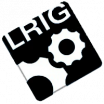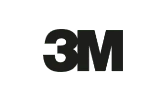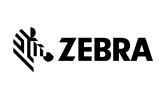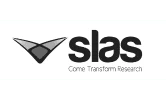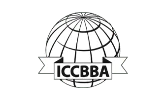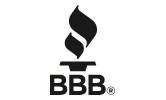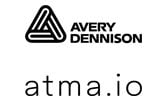Lean manufacturing principles are all about looking at existing processes and flows through the lens of a microscope with the intention of maximizing value while simultaneously minimizing waste. There are seemingly endless tactics and opportunities within almost every manufacturing process to achieve big gains, so the question then becomes, where do you start?
Within the context of industrial rubber and belt manufacturing, product marking and branding can actually be a very realistic process to dissect as while seemingly simple and straightforward, there are likely huge improvements to be made that can amount to tangible improvements and savings.
Most manufacturers of rubber belts or hoses have an internal process for branding and marking that includes some combination of preprinted films and print-on-demand. While necessary to employ this dual marking strategy if more than two colors are needed to brand and identify products, assessing your process associated with printing on demand is likely to reveal underutilization and room for process improvement.
In this article, we’ll discuss how optimizing a print-on-demand strategy for marking of rubber products can catapult your continuous improvement efforts to the next level by defeating some of the most common wastes in manufacturing.
Inventory
If you are a manufacturer relying on a dual strategy for product branding and identification, it might be time to reevaluate if that is still necessary. For example, if your brand can adopt a single color for branding, accompanied by white markings for variable data, a two color ribbon could help accomplish a print-on-demand strategy in a single step hence reducing or virtually eliminating the need for preprinted stock. Demand planning for a host of films and ribbon for inventory purposes can lead to over or under purchasing, waste, errors, and underutilized space. Consider which of your brands could be migrated to a print on demand strategy for further process flexibility and reduced inventory.
Further, if your centralized print station can be dispersed and housed at individual work cells, the need to inventory mass-quantities of SKU’s can be virtually eliminated. Printing only what you need, when you need it in real time means that inventory itself and the need for inter-company transporting of supplies is greatly reduced. A bonus to this strategy is that labor can also be reduced as there is potential for reallocating employees to more value-added tasks.
Unnecessary motion & waiting
Unless your print on demand process has already been decentralized, there is waste associated in the form of unnecessary motion and waiting. Specifically as it relates to downtime or pick time, fetching parts from the warehouse takes tangible time between jobs that can dramatically effect throughput. If errors are detected or the wrong part is delivered, stoppages can be required which creates additional downtime for quality checks or machine set-up. Add to that the changeover time associated with color or brand specificity and there is even more time wasted.
When staff aren’t having to constantly be pulling parts from the warehouse and are stocked with what they need to easily and seamlessly print on-site and transition from job to job right at their individual work cell, gaps in the process are closed and wait times reduced. The flexibility to print multiple colors or brands all from the same station without having to visit a warehouse or wait for picked parts to be delivered means that time is saved and throughput improved.
In addition, the utilization of an engineered for purpose thermal transfer print station, such as the TransMark printer provided by Computype, means that additional time can be saved in the way of reduced downtime. Specifically designed and modified to ensure optimal functionality for film printing in environments where dust and debris are commonplace means that throughput is improved and consistent. Lastly, service contracts for printer maintenance reduce unplanned downtime resulting from printer wear and tear.
Defects and scrap
If it’s beginning to sound like all of these wastes are related, it’s because they are! If pre-imaged films in inventory are beyond their expiration date or are accidentally delivered to the wrong work cell, errors can occur and product can be mis-branded. Even if you’re already leveraging thermal transfer printers for on-demand film generation, defects and scrap can result if the operator isn’t properly trained or if the printer itself isn’t properly configured (we’ll discuss this more later). If scrap or waste occurs in your plant as a result of product branding efforts, there is definite room for improvement.
When properly engineered printers are strategically positioned within manufacturing, the level of control is increased and as a result, the odds of errors are decreased. The fewer steps and resources needed to complete a workflow, the better in the way of error reduction.
Over-processing
In reality, the level of difficulty associated with achieving multi-color branding completely depends on your current branding strategy. We recently encountered a plant that was double processing their rubber in an attempt to add multiple colors; resulting in twice the time and upwards of $5,000 in costs associated with masking tape to apply the brand to the slab. From a lean manufacturing standpoint, this story alone could be a case study on why & how to evaluate existing processes.
As it relates to the example above, a two-color ribbon was engineered so that over-processing could be eliminated and two color branded product could be completed after a single pass through the print station.
Over processing can also refer to ‘too much processing’- which lends itself to the wastes already discussed. Wasting time waiting, overstocking inventory, and scrapped product as a result of an error all add process time to the workflow, meaning a lesser productive plant as a whole.
Unforeseen events or costs
The list of potential costs associated with unplanned occurrences in manufacturing could go on and on forever. While no lean strategy is ever going to completely eliminate life’s little mishaps, the goal is to reduce the chances associated with things going wrong as much as possible, or at the very least, make your teams aware of the likely places where issues could occur.
If you’re using a standard thermal transfer printer to print as many films as possible, congratulations, you’re improving flexibility and functionality within your plant. But don’t get too excited yet- as standard thermal transfer printers aren’t always engineered to perform in environments such as yours. For example, printheads can wear quickly as a result of dust particles, or improper heat settings can cause inconsistency or unreadable images.
No surprise, the solution to reducing some of these unplanned hurdles is partnering with a supplier who can simultaneously add flexibility AND control to your process in the way of on-demand printing.
When you install engineered-for-purpose thermal transfer print stations at individual work cells, you greatly reduce the chances of unplanned downtime. Printers offered by Computype for example, are designed specifically to reduce user error and unexpected maintenance in industrial manufacturing environments. Printers purposely won’t function without the lid closed, ensuring the printhead is kept clean of floating dust, whilst printhead pressure toggle locks ensure that heat settings aren’t accidently tampered with.
Lastly, printer service is where the reduction of unplanned events and costs can really work to achieve significant lean savings. Regularly planned maintenance checks ensure that any looming issues are addressed before they cause your plant unplanned downtime or costs in the way of expensive call-outs.
As the industry becomes more competitive and advances further in the way of Industry 4.0, it becomes increasingly imperative that internal manufacturing processes and practices are both lean and smart. Reviewing your existing branding strategy and discussing potential process improvements with your supplier is a great first step towards efficiency and cost improvements. Achieving a consistent looking and performing product that your customers can rely on is what truly sets your brand apart from the competition, and as lean manufacturing sticklers ourselves, we’re firm believers that quality begins on the manufacturing floor.
Connect with our labelling experts today
Blog article form
"*" indicates required fields



